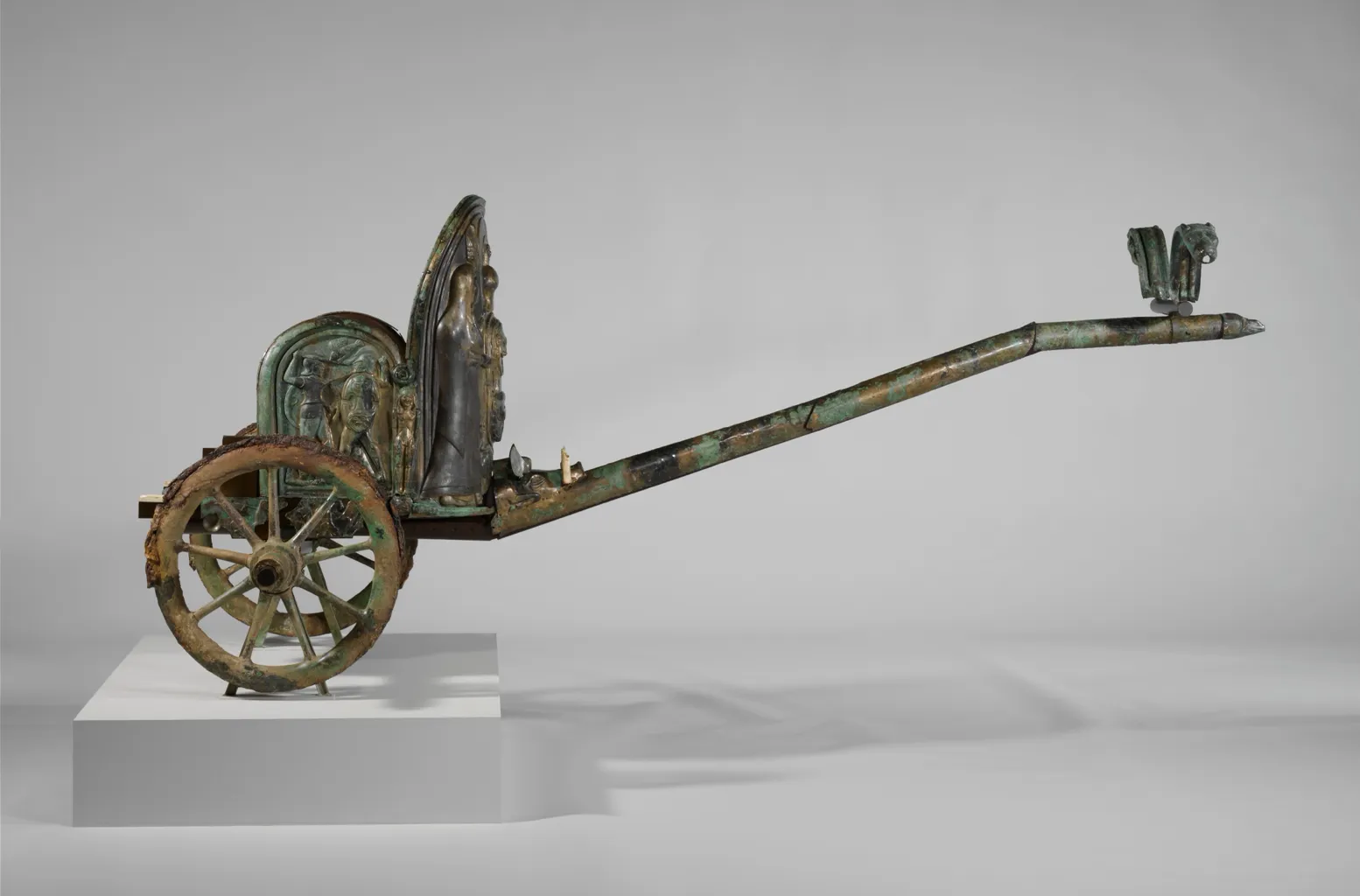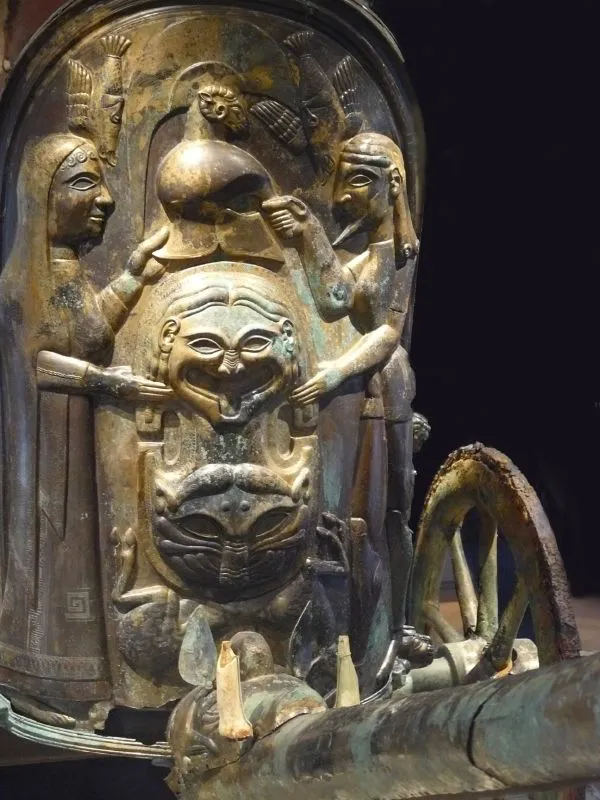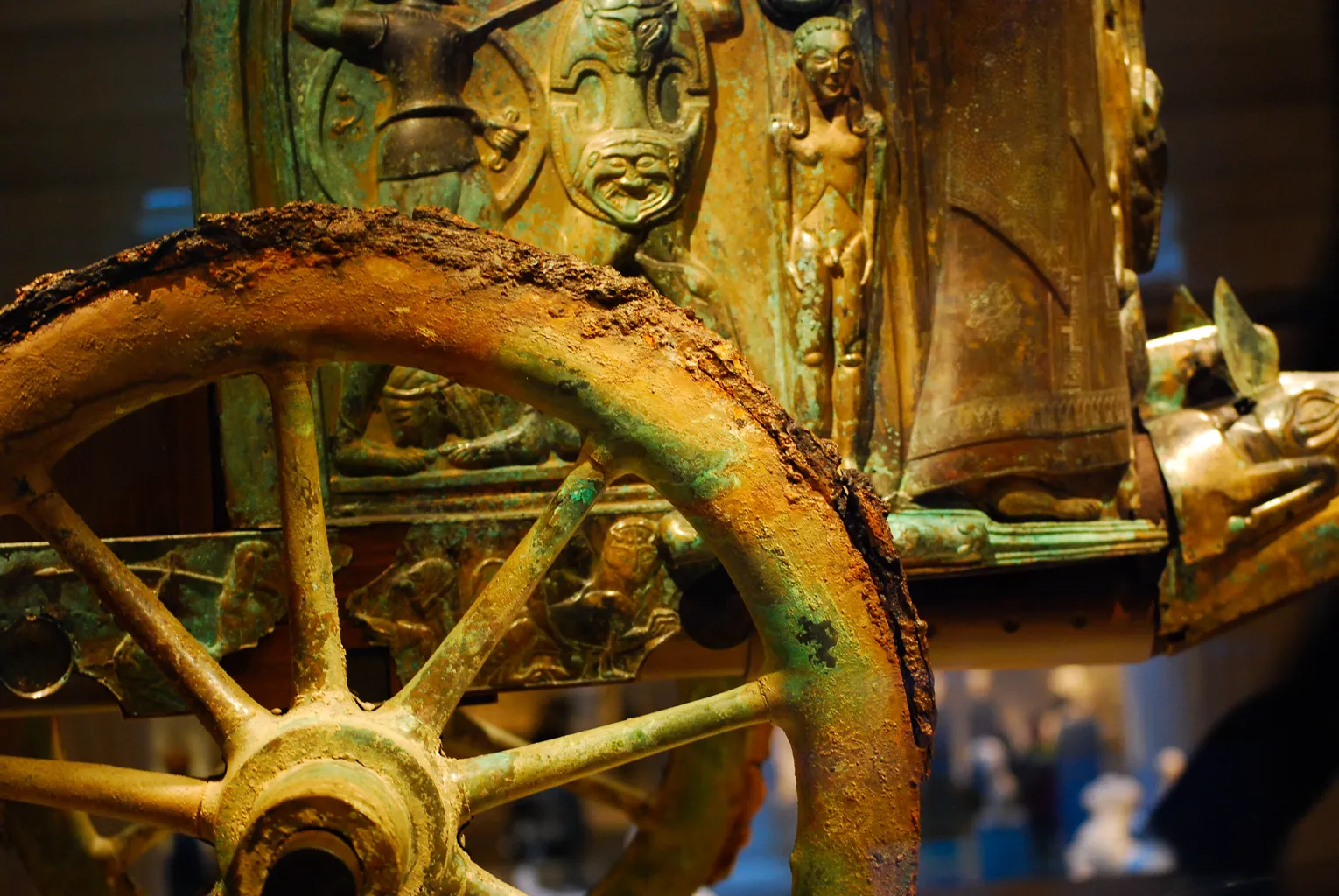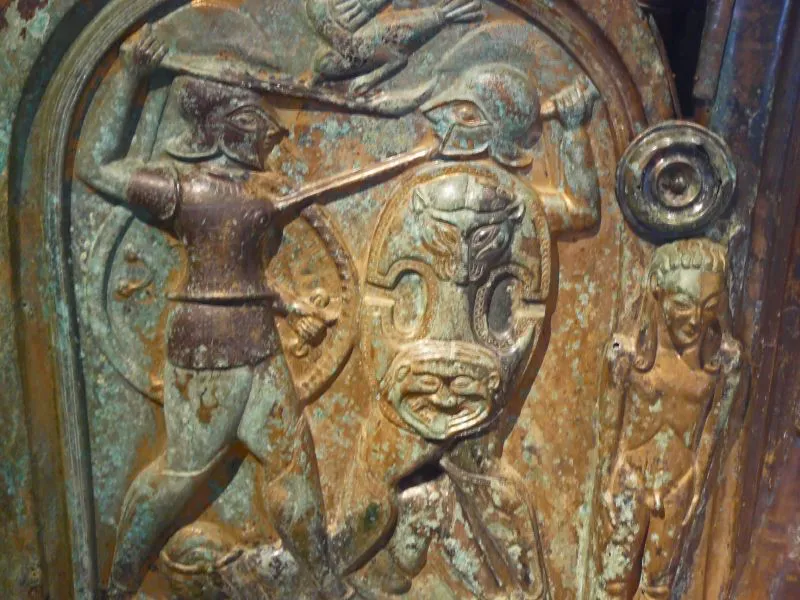The Monteleone Chariot: A Masterpiece of Etruscan Craftsmanship
The Monteleone chariot, an Etruscan artifact dating back to around 530 BC, stands as one of the most important archaeological discoveries of the 20th century. Unearthed in 1902 in Monteleone di Spoleto, Umbria, it is now a highlight of the Metropolitan Museum of Art in New York City. Among the few surviving ancient chariots, it is celebrated for its preservation and intricate craftsmanship.
Get your dose of History via Email
Discovery and Early History
The Monteleone chariot was discovered by a farmer named Isidoro Vannozzi while digging a wine cellar. After its discovery, the chariot’s journey to the Metropolitan Museum became the subject of controversy. Some reports suggest Vannozzi hid the chariot out of fear it would be confiscated by authorities. He allegedly traded it to French buyers for two cows. Another version, told by Vannozzi’s son, claims the chariot was sold for scrap metal, and the proceeds were used to buy roof tiles. Regardless of the exact details, the chariot eventually made its way to Paris, where it was purchased by financier J.P. Morgan. He then donated it to the Metropolitan Museum in 1903.

The Chariot’s Unique Features
This chariot is remarkable for its nearly complete condition, which sets it apart from other surviving ancient chariots. Though hundreds of ancient chariots have been found, most are heavily damaged. The Monteleone chariot remains the best-preserved example, featuring an intricate combination of wood, bronze, and ivory.
Measuring over 130 cm in height, the chariot was likely not intended for battle but for ceremonial parades. Its wooden frame is covered with bronze plates, which are richly decorated with detailed scenes from Greek mythology. These plates depict episodes from the life of Achilles, the famous Greek hero of The Iliad. The central panel shows Thetis, Achilles’ mother, presenting him with a new set of armor after his friend Patroklos’ death. Other panels depict Achilles in combat and his ascent to the afterlife, pulled by winged horses.

The level of detail in the chariot’s artwork is extraordinary. For example, one of the side panels shows a fierce battle between Achilles and Memnon, a Trojan ally. The chariot’s shaft is decorated with a boar’s head, while a dead deer lies beneath the shield, possibly symbolizing a hunting scene. The wheels of the chariot also have a distinctive design, featuring nine spokes, which is more than the typical Greek, Egyptian, or Persian chariots.
Restoration and Rediscovery
The original reconstruction of the chariot in 1903 was later found to be flawed. In 1989, Italian archaeologist Adriana Emiliozzi led a team that began a thorough five-year restoration project. This effort revealed that the chariot had been involved in a serious accident, which was previously unknown. It also confirmed that the 1903 assembly had inaccuracies. The restored chariot, with its corrected structure, was unveiled to the public in 2007, offering a more historically accurate representation of the ancient Etruscan vehicle.

A Chariot Rich in Mythological Imagery
The bronze reliefs on the Monteleone chariot highlight the Etruscan fascination with Greek mythology. The central panel’s depiction of Achilles receiving his armor reflects the hero’s central role in Homeric epics. Flanking this central scene are smaller, finely detailed figures, including two nude males, which add to the chariot’s artistic complexity. Below the main panels are smaller, symbolic scenes, including depictions of Achilles’ training under the centaur Chiron.
This use of mythological imagery in Etruscan art suggests the influence of Greek culture on the Etruscans, while also showcasing their unique artistic style. The presence of animals, legendary creatures, and scenes of combat and triumph reflects a deep appreciation for storytelling through visual art.

A Controversial Legacy
The Monteleone chariot’s acquisition by the Metropolitan Museum has not been without controversy. In 2005, the town of Monteleone di Spoleto launched a campaign to reclaim the artifact, asserting that it had been improperly taken from Italy. The Italian government, however, did not support this effort, and the Metropolitan Museum defended its acquisition, stating that the chariot had been purchased in good faith. Despite the legal dispute, the chariot remains in New York, where it continues to draw attention from visitors worldwide.

Conclusion
The Monteleone chariot is not just a marvel of ancient engineering but also a testament to the cultural and artistic achievements of the Etruscan civilization. Its preservation, detailed mythological scenes, and the controversies surrounding its discovery and acquisition all contribute to its significance. As one of the most complete examples of an ancient chariot, it offers a rare glimpse into the ceremonial and artistic practices of a long-lost world.
Sources:

